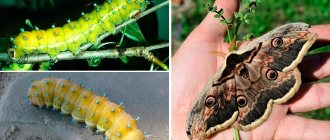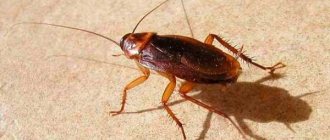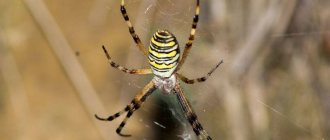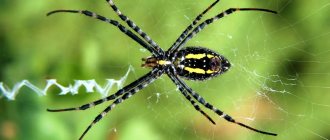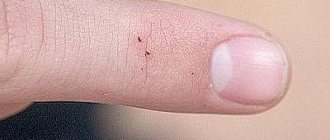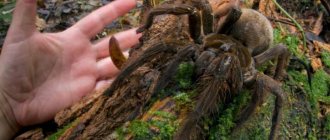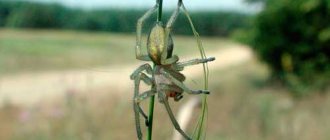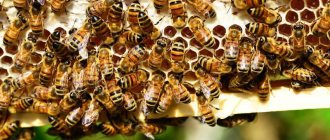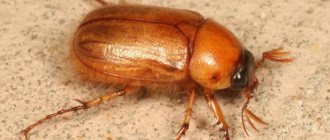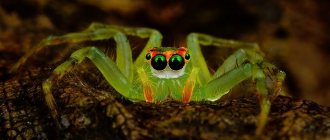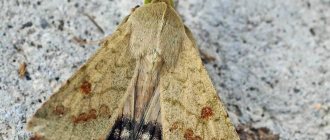The karakurt spider is one of the most dangerous creatures on earth. Despite its small size and non-threatening appearance, the karakurt's venom is 15 times stronger than that of a rattlesnake and 50 times stronger than that of a tarantula. For a horse or camel, a karakurt bite is often fatal.
The karakurt spider is one of the most dangerous creatures on earth
Without prompt medical intervention and professional help, a meeting with a person can also result in death, although such cases are extremely rare. The black spider evokes mystical associations due to the presence of 13 bright red spots on the body and cannibal family traditions. Kalmyk shamans use a dangerous creature in some rituals. There is a common belief that karakurts live only in deserts and do not pose a danger to residents of the central and even southern steppe and forest regions, but this is not true. Recently, the migration of biting “robbers” to the north has been obvious, and climate warming has led to the fact that karakurts are recorded in regions where they have never been observed before.
Description and life activity of karakurt
The poisonous karakurt spider belongs to the order of spiders of the family of web spiders from the genus of black widows. Translated from the Turkic language, the name is literally translated as a black worm. The Latin name Latrodectus tredecimguttatus reflects the external characteristics - 13 points on the back and the essence of the spider (biting robber). What does the karakurt spider, which is sometimes called the steppe spider, look like? In terms of size, the spider belongs to the medium arachnids. The size of the male is 4-7 mm, the female karakurt is 2-3 times larger and can reach 20 mm. The body of the eight-legged spider is black, with a pronounced abdomen. Both males and females have red spots or dots on the upper side of the abdomen. On the lower part of the abdomen a clear scarlet pattern is visible, similar to the outline of an hourglass. The spot on the abdomen often has a snow-white halo. Adults (males) can be completely black. Karakurt is a predator; it feeds on insects, which it uses a web to catch.
Despite its small size and non-threatening appearance, the karakurt's venom is 15 times stronger than that of a rattlesnake and 50 times stronger than that of a tarantula.
White karakurt, also related to web spiders, has a white or yellowish color. There is no hourglass pattern or spots on the body, but there are 4 indentations forming a rectangle. White spiders are much less poisonous, their bite is not dangerous to people, although the venom of the white karakurt is similar in its toxicological properties and effects on the human body and animals to the venom of the black widow. White karakurts can be found in Russia and neighboring countries, but the main habitat is located further south - in North Africa, the Middle East, and also in Central Asia. Let's focus on the black widow karakurt as the most dangerous representative of the swindlers, which you can meet at domestic resorts.
Life cycle
With the onset of mating season, the male goes in search of females. After mating, the male lives in the female’s nest for up to two months and dies by September. The fathead makes a cocoon and lays up to 80 eggs in it, guards them for some time, taking the cocoon out to warm in the sun during the day, and taking it into a hole at night. When the time comes for the offspring to appear, she webs the entrance to the hole and dies. The emerging spiderlings spend several days attached to the back of the deceased female and feeding on her hemolymph, then settle within 5-10 m from the nest. The total lifespan of females is 1.5 years, males - about 8.5 months.
Gallery: karakurt spider (25 photos)
Lifestyle
The spider is engaged in weaving a strong web, which has a hole in the middle. Usually the arthropod places it on an inclined surface among minor vegetation.
Are you afraid of spiders?
TerribleNo
However, the paikulla steatoda can also hunt on the ground. This is typical of spiders that live in semi-deserts.
They are capable of attacking prey that is larger than them. They are capable of neutralizing and eating even a black widow.
Spiders have trouble seeing. They recognize their prey by vibrations in the web. Steatoda is not aggressive. Can attack a person only if life is threatened. Life expectancy does not exceed 6 years.
Habitat and biological enemies
The zone of residence of the Karakurts covers the Crimea, southern Russia and Ukraine, the Astrakhan steppes, Kazakhstan, Central Asia, the Middle East and North Africa. When migrating north, spiders reach the Saratov region, the Southern Urals and even the Moscow region, but they cannot settle in the northern regions; in winter the spiders die. For living, karakurts choose dry steppe areas and arable lands, wastelands, salt marshes, slopes of ravines, ditches, ruins of abandoned villages, cracks in adobe houses. The spider can also be found in populated areas, in summer cottages, and sometimes it penetrates into a person’s home. The peak of activity occurs during the fertilization period - June-August.
Arachnids
The arid regions of Central Asia and Africa are home to large arthropods that are often mistaken for spiders. These are salpugs. According to the English translation, they are also called camel spiders. But unlike spiders, salpugs have teeth, they do not have arachnoid glands and are not poisonous.
Solpuga
Salpuga is a large animal capable of catching up and killing not only invertebrates, but also small lizards. The chelicerae of large salpugs are so powerful that they can bite through a human fingernail. No real spider is capable of this. Although salpugs do not have poison, their bite can be very dangerous. Particles of decaying flesh remain on the chelicerae of these arthropods. After a bite you can get blood poisoning.
Spiders cause arachnophobia in many people, although they are one of the most harmless and useful inhabitants of the planet. Spider lovers consider them “kittens.”
Danger to humans
As a rule, males and young individuals do not pose a danger to humans, since they cannot bite through the skin with their weak jaws, although isolated cases of attacks are known. Adult females pose a danger, especially in July-August. You can distinguish the female by its color. Males have red spots with white rims, while females have no edging. Sometimes in females the red spots change to yellow stripes. Females have long legs up to 30 mm and are significantly larger than males.
The attack happens very quickly. Karakurt attacks only in self-defense. Nature has endowed the spider with such a strong poison so that it can capture the burrows of small rodents, which do not come into conflict with it and immediately vacate their territory. A predator can attack when it first seems to be in danger, so it is better to avoid contact with it. The difficulty in detecting danger lies in the fact that karakurts do not weave their net in the classical way. The threads are arranged horizontally, the web does not have a characteristic pattern and is chaotic. Attacks occur most often at night and on vacation, when you can accidentally crush the karakurt or disturb the web.
A spider bite is not painless, but it does not cause much concern. The bite site is marked with a small red spot, which disappears after a few minutes. After the poison has taken effect, the bitten person begins to experience severe pain in the damaged area. Specific psychological and physiological reactions arise.
In the first minutes and hours after the bite, poisoning is characterized by the following symptoms:
- strong mental agitation;
- feeling of fear of death, panic;
- spasms and suffocation;
- severe pain in the abdomen, chest and lower back;
- feeling that the legs are being taken away;
- bluish complexion;
- shallow breathing, dizziness;
- sometimes cramps of the arms and legs, tremors, vomiting;
- increased heart rate, arrhythmia;
- retention of urination and defecation;
- increased protein content in urine.
The benefits of crosses
A spider with a cross on its back benefits a person.
- It eats a huge number of insects, many of which harm the garden.
- In folk medicine, spider webs are used. It is a powerful antibacterial agent, which is used in field conditions to disinfect and heal wounds.
- The sticky web is capable of trapping the smallest microparticles. Scientists use this property to analyze the composition of the air in a particular area.
- Residents of the tropics rely on the strength of the spider thread - they weave nets and fishing nets from it.
Treatment and prevention
The most elementary and well-known since ancient times method of treating a poisonous spider bite, supported by official medicine, is cauterization. The predator's venom is sensitive to heat and is destroyed when heated, losing its toxic properties. Therefore, immediately, within 2 minutes after the attack, the damaged area must be burned with a cigarette, match or other method. The spider does not have powerful jaws, the bite depth does not exceed 0.5 mm, so immediate cauterization has a strong effect. In any case, you should contact a medical facility as soon as possible.
As special measures, anti-caracourt serum is used, which is administered intramuscularly. The serum relieves the main symptoms of poisoning, and recovery time is reduced to 3-4 days.
The disadvantage of this product is its high cost. In the absence of a special substance, the following is administered intravenously:
- novocaine;
- calcium chloride;
- magnesium hydrogen sulfate.
- 33% ethyl alcohol;
- 2-3% solution of potassium permanganate.
The victim must be given water, rubbed with alcohol, and enemas are recommended. Universal remedies can be used as painkillers: Analgin, Diphenhydramine, Ketanol.
In cases of living in the territory inhabited by karakurts, it is necessary to be careful when cleaning residential premises, especially in adobe houses, and pay attention to the presence of cobwebs in personal areas. When going outdoors, you should follow certain rules:
- do not spend the night in the open air in habitats of poisonous spiders;
- do not come into contact with the inside of the tents;
- examine the place where you spend the night or rest, paying attention to holes and natural depressions in the ground, rodent burrows, and if there are any, cover them with earth;
- use covering clothing and wear a hat;
- periodically, and without fail before going to bed, carefully inspect the tent, sleeping places, clothes, shoes and other property;
- use the canopy, tucking it under the sleeping place;
- dig around the tent, making a shallow ditch;
- do not take off your shoes;
- If you find a karakurt, do not touch it; if the spider is on your clothes, shake it off or knock it down with a click.
To prevent the death of domestic animals, the soil is treated with hexachlorane and other poisons.
Which houses do arthropods prefer?
Most often, arthropods are found in houses with or without collapsing foundations. They are damp, warm and full of insects that live under the floor.
The more cockroaches, midges and flies in the rooms, the more arthropods there will be. If you get rid of insects, then the spiders will go away.
When cleaning your home, you can use a vacuum cleaner to remove cobwebs. But the bag must be shaken out immediately so that the arthropod does not get out and weave new networks.
We collect cobwebs with a vacuum cleaner.
MODERATELY DANGEROUS
Some people confuse Eresus with the deadly South American black widow, which it also bears some resemblance to. Fortunately, the fathead's venom is not fatal to humans, although it can kill the small mammal in seconds. However, a spider bite can cause very severe pain, followed by numbness and swelling. For some, pain and stiffness in movements in the bitten part of the body go away only after a week.
The mechanism of action of eresus venom has not yet been fully studied. It is known to have the properties of a muscle relaxant - it relaxes muscles. The venoms of many spiders are already used in pharmacology. Perhaps someday fatheads will also serve medicine.
Spider Hunting Rules
For an argiope waiting for prey, it is not enough to simply weave a net. The owner of the trap sits in its center, in that very zigzag segment, and waits for the victim, holding a skein of created threads in his limbs. When the prey is caught, the hunter entangles it in a web and bites it. The insect dies from the poison; at the same time, it begins to be partially digested, while not yet in the spider’s mandibles.
HORN Dweller
Black eresus lives in sunny, dry places, in forests, in the steppe zone, on the outskirts of heathlands, in dry pastures, alpine meadows and even in deserts and salt marshes. The favorite food of these spiders is beetles, but the black fathead does not disdain flies, butterflies and mosquitoes if they are caught in the web.
Fatheads hunt using a web trap. The lower part of this cunning structure is a hole with a diameter of about 1 cm, sometimes quite deep, up to 10 cm. The spider lives in it. As a rule, he digs it out in the ground or under large stones, but often instead masters the passages of rodents. The eresus weaves a web around the hole so that it looks like a tube. Not far from it, on the ground or low grass, the fathead constructs a trapping net in the form of a canopy. There are no adhesive threads in it, but it is made of a special ultra-thin, messy web that is easy to get tangled in. The network of the thickhead is so strong that it can hold even large beetles - darkling beetles and dung beetles. It is connected to the web tube by several signal threads, the vibrations of which inform the spider that a victim has fallen into the trap. It quickly jumps out, grabs its prey and paralyzes it with poison. Eresus throws out the remaining food from the hole or puts it in a special hole.
